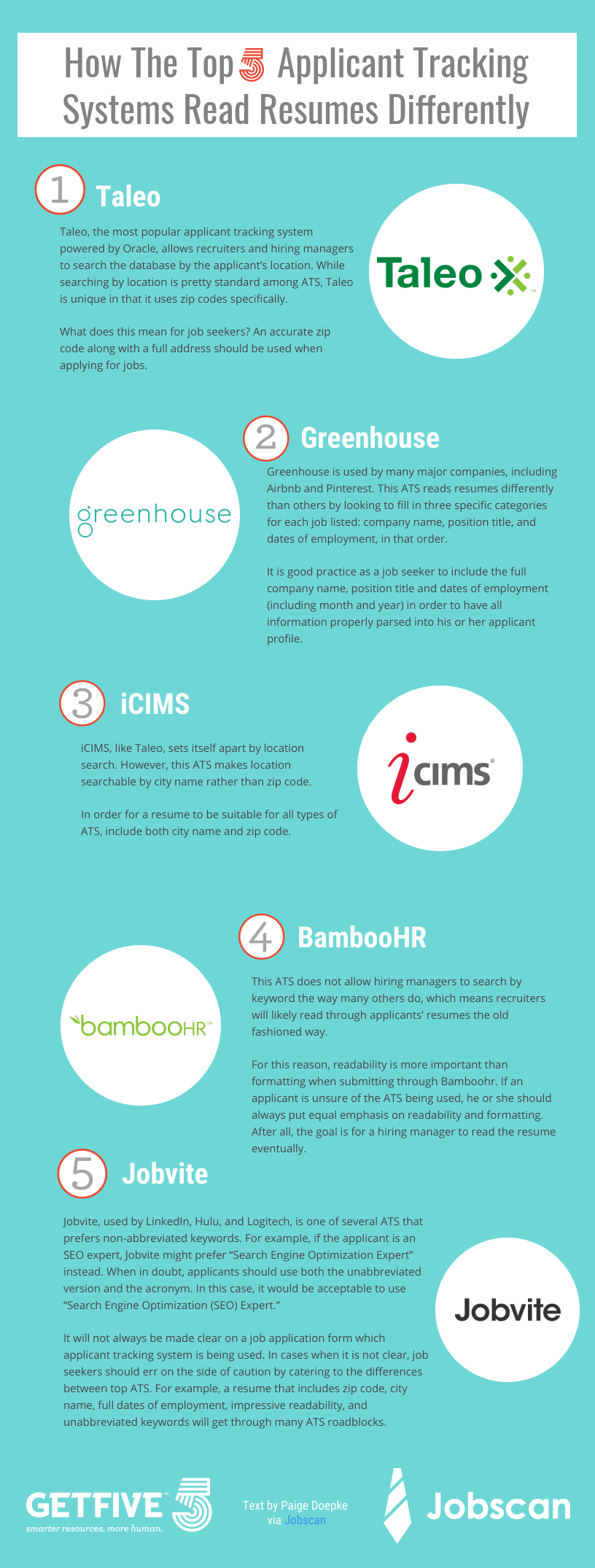By Paige Doepke
When a job seeker applies for a job online, most often, his or her resume is “parsed” or read by an applicant tracking system. The applicant tracking system breaks each resume down into categories, making it easier for hiring managers to sort through candidates. But did you know that each ATS actually reads resumes in a slightly different way?
If given the opportunity, an applicant can increase their chances of getting past the resume screener by catering their resume to the specific ATS. For example, if the ATS being used does not parse plural forms of keywords correctly, the applicant should pay special attention to keywords before submitting his or her resume. For a better understanding, here’s a look into how the top five ATS read resumes differently.
Taleo
Taleo, the most popular applicant tracking system powered by Oracle, allows recruiters and hiring managers to search the database by the applicant’s location. While searching by location is pretty standard among ATS, Taleo is unique in that it uses zip codes specifically.
What does this mean for job seekers? An accurate zip code along with a full address should be used when applying for jobs.
Greenhouse
Greenhouse is used by many major companies, including Airbnb and Pinterest. This ATS reads resumes differently than others by looking to fill in three specific categories for each job listed: company name, position title, and dates of employment, in that order.
It is good practice as a job seeker to include the full company name, position title and dates of employment (including month and year) in order to have all information properly parsed into his or her applicant profile.
iCIMS
iCIMS, like Taleo, sets itself apart by location search. However, this ATS makes location searchable by city name rather than zip code.
In order for a resume to be suitable for all types of ATS, include both city name and zip code.
BambooHR
This ATS does not allow hiring managers to search by keyword the way many others do, which means recruiters will likely read through applicants’ resumes the old fashioned way.
For this reason, readability is more important than formatting when submitting through Bamboohr. If an applicant is unsure of the ATS being used, he or she should always put equal emphasis on readability and formatting. After all, the goal is for a hiring manager to read the resume eventually.
Jobvite
Jobvite, used by LinkedIn, Hulu, and Logitech, is one of several ATS that prefers non-abbreviated keywords. For example, if the applicant is an SEO expert, Jobvite might prefer “Search Engine Optimization Expert” instead. When in doubt, applicants should use both the unabbreviated version and the acronym. In this case, it would be acceptable to use “Search Engine Optimization (SEO) Expert.”
It will not always be made clear on a job application form which applicant tracking system is being used. In cases when it is not clear, job seekers should err on the side of caution by catering to the differences between top ATS. For example, a resume that includes zip code, city name, full dates of employment, impressive readability, and unabbreviated keywords will get through many ATS roadblocks.
More ATS-specific Tips
With Jobscan, job seekers can analyze their resume against a specific job description to learn which search keywords they’re missing as well as bonus tips based on which ATS they’re using.










